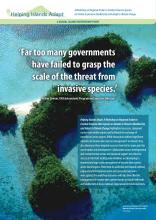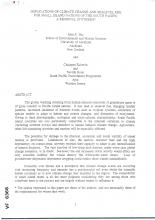Removal of Nonnative Vines and Post-Hurricane Recruitment in Tropical Hardwood Forests of Florida

BRB
Available Online
Horvitz, Carol C.
,
Koop, Anthony
2001
In hardwood subtropical forests of southern Florida, nonnative vines have been hypothesized to be detrimental, as many species form dense vine blankets that shroud the forest. To investigate the effects of nonnative vines in post-hurricane regeneration, we set up four large (two pairs of 30 3 60 m) study areas in each of three study sites. One of each pair was unmanaged and the other was managed by removal of nonnative plants, predominantly vines.Within these areas, we sampled vegetation in 5 3 5 m plots for stems 2 cm DBH (diameter at breast height) or greater and in 2 3 0.5 m plots for stems of all sizes. For five years, at annual censuses, we tagged and measured stems of vines, trees, shrubs and herbs in these plots. For each 5 3 5 m plot, we estimated percent coverage by individual vine species, using native and nonnative vines as classes. We investigated the hypotheses that: (1) plot coverage, occurrence and recruitment of nonnative vines were greater than that of native vines in unmanaged plots; (2) the anagement program was effective at reducing cover by nonnative vines; and (3) reduction of cover by nonnative vines improved recruitment of seedlings and saplings of native trees, shrubs, and herbs. In unmanaged plots, nonnative vines recruited more seedlings and had a significantly higher plot-cover index, but not a higher frequency of occurrence. Management significantly reduced cover by nonnative vines and had a significant overall positive effect on recruitment of seedlings and saplings of native trees, shrubs and herbs. Management also affected the seedling community (which included vines, trees, shrubs, and herbs) in some unanticipated ways, favoring early successional species for a longer period of time. The vine species with the greatest potential to strangle gaps were those that rapidly formed dense cover, had shade tolerant seedling recruitment, and were animal-dispersed. This suite of traits was more common in the nonnative vines than in the native vines. Our results suggest that some vines may alter the spatiotemporal pattern of recruitment sites in a forest ecosystem following a natural disturbance by creating many very shady spots very quickly.

